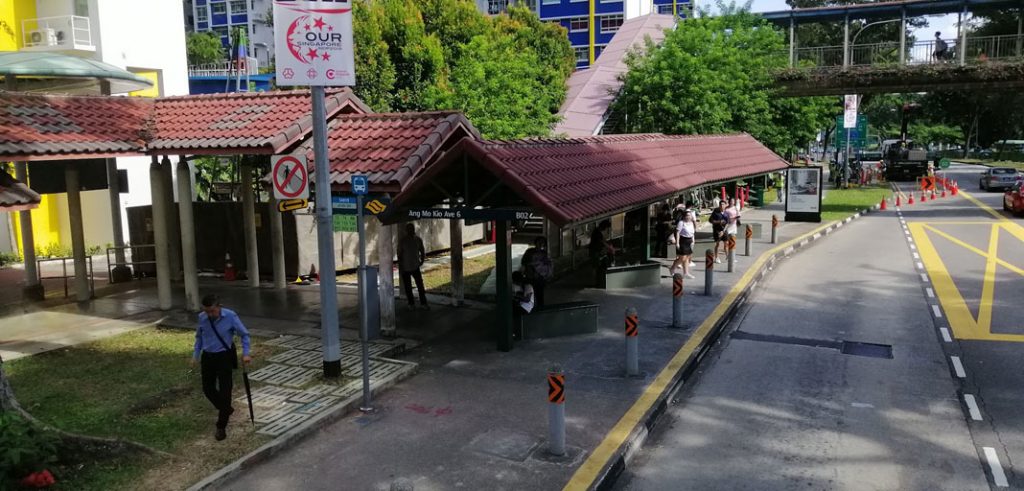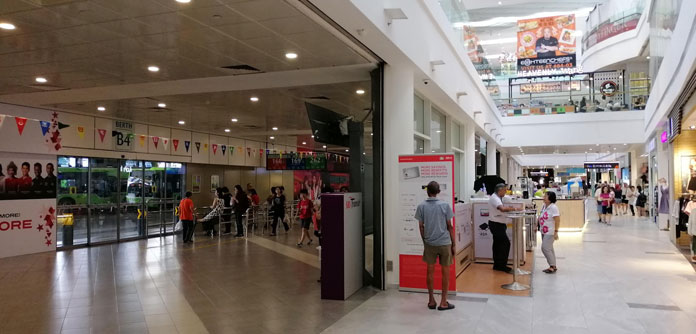Why I ❤ Singapore buses
Simon Tan
Simon Tan looks at how Rapid Penang and Rapid KL can increase their ridership by emulating Singapore’s thoughtful planning and designing of its bus system.
After one year as admin of Friends of Rapid Penang, it was a dream come true when I rode in Singapore buses during my mid-2019 visit.
I took the buses in Singapore more often than the mass rapid transit. Serving both feeder and arterial routes, the fleet of about 6,000 buses has better coverage and frequency than the mass rapid transit.
Before the first mass rapid transit line in Singapore was opened in 1987, the buses in the island republic were already doing an efficient job moving people. Even today, the buses have higher ridership than the mass rapid transit.
In an earlier article in Aliran, I pointed out four easy ways to improve the bus service in Penang.

- Reduce wait times – smarter routes and more buses
- Reduce travel times
- Attract and retain more bus users
- Empower bus users
Unfortunately, these four low-hanging fruits are caught in a net of bureaucracy and multi-departmental responsibilities. I hope the four ‘tools’ proposed in the next paragraph are already ‘fallen fruits’ waiting to be picked (ie implemented).
How Penang and Kuala Lumpur can catch up with Singapore
We should emulate Singapore’s thoughtful planning and implementation of these four tools to increase bus ridership. These tools are not rocket science; Malaysia has them too.
It is just that Singapore implemented them effectively as seen in the photo at the top, namely:
1) bus lanes
2) walkways and bus shelters
3) real-time GPS data made available to popular apps such as Google Map and Moovit
4) quality assurance and enforcement
The first two items are in the hands of the respective local councils. The third is up to Prasarana, while the fourth is best under the Ministry of Transport.
Surprisingly, the first few measures can be implemented here with little cost as the lanes and GPS data are already there!
This picture at the top paints a thousand words. The “7 Stars” features in almost all Singapore bus stops, as described below in section 2) Walkways and bus shelters. Note the sheltered walkway linking the bus stop to nearby apartments. The yellow box is to allow buses to rapidly leave the bus stop. (This particular bus lane was closed during off-peak hours for road maintenance.)
1) Bus priority lanes and systems
I ❤ the buses in Singapore as they can travel rapidly along bus lanes during peak hours, overtaking cars stuck in heavy traffic, thus shortening the travel times of loads of bus riders. Yellow boxes help buses exit swiftly from bus stops.
Strict enforcement using pocket-hurting fines and embarrassing demerit points helps move people, not cars. Can Malaysia do the same?
I regularly take routes 600, 640 or 650 on Rapid KL, from Pasar Seni to Taman Evergreen, (4.5 mile, Old Klang Road, opposite Scott Gardens). The existing bus lanes along Jalan Syed Putra help to move buses and taxis.
However, during peak hours, traffic along these three routes, together with seven other bus routes plying Old Klang Road, is reduced to a bumper-to-bumper crawl (below 5km/h). Walking would be quicker!
See how bad the infamous Old Klang Road crawl is:
Buses stuck in a crawl don’t earn revenue for bus companies. They double the travel time for over 60 passengers, already annoyed at being packed like sardines in uncomfortable conditions. One look at these buses is enough to discourage motorists from switching to buses.
One bus takes up as much road space as 30 cars. So buses reduce congestion and break the vicious cycle of more cars, more jams, more carbon emissions.
Dear Kuala Lumpur City Hall, please designate the left lane of Old Klang Road (which has at least three lanes in each direction) as bus priority lanes. These lanes could cater for buses, school buses, factory buses, emergency vehicles, taxis and motorcycles during peak hours.
In this way, buses can double their average speed of 5km/h in standstill traffic to 10km/h on priority lanes, truly moving people not cars. This faster journey would be enough to convince motorists to switch to Rapid buses – a win-win for Rapid KL, bus riders and all road users.
Rapid KL, Rapid Penang and other bus companies, with their vast experience and data, should sit down with their respective local councils to plan where priority lanes can be effective during peak hours.
Another example of major bus routes would be Jalan Raja Chulan, Jalan Tun Perak and Jalan Tun Tan Cheng Lok. During peak hours, traffic comes to a standstill, as seen in this video:
I can walk from Shangri La Hotel to Pasar Seni faster than taking the free Purple Line Go buses or ride-hailing taxis.

Forget about the lame excuse that roads are narrow. What is wrong in allowing only buses on narrow two-lane roads (eg Penang’s Chulia Street or Kuala Lumpur’s Chinatown) during peak hours. Smart cities could also have smart traffic lights that give buses priority. Those who love their cars can drive on the remaining lanes or drive outside peak hours.
Billions have been invested or are to be invested in buses, mass rapid transit and light rail.
But what is the point if buses and feeder buses are stuck in traffic jams? Please sign this petition if you support the creation of bus priority lanes, starting with Old Klang Road. After signing, please suggest other roads that you think can be used for effective bus priority lanes in the comments section “Why I support this petition”.
If you love driving your car so much and contributing to the jam with unreasonable reasons, please create your own petition against bus priority lanes.
2) Walkways and bus shelters
I ❤ to use Singapore buses, come rain or shine. As you can see from the photo above, extensive covered walkways take care of bus riders no matter what the weather. The seven-star bus shelters are so well thought out to include:
- a low roof to block the rain or scorching sun at a 30-degree angle
- adequate ventilation
- up-to-date information about routes
- comfortable angled seats
- night lighting
- a yellow box on the road to give buses right of way
- disabled-friendly low steps

Most bus stops in Kuala Lumpur and Penang are an afterthought. The above photo paints a thousand words. The shelters, with a high roof and glass on three sides, are designed for advertisements – good to look at but they would struggle to get even one star.
Kuala Lumpur City Centre has some sheltered walkways but many more are needed. Please draft new Malaysian standards incorporating the simple proven designs used for Singapore bus stops, complemented by sheltered walkways.
3) Open real-time GPS data for popular apps

I ❤ taking the buses in Singapore as I can use the popular Google Maps and Moovit apps to plan my journey.
I key in my destination, starting point and start time, and bingo – the app suggests a few options with valuable information. It also shows which combination of buses and mass rapid transit to take, total travel time, estimated arrival time, the route on map or a step-by-step guide. In most instances, we need to change buses to reach our destination and it would be difficult to remember so many routes, schedules and interchange locations.
However, when using these two apps in Penang or Kuala Lumpur, the timing is based on published schedules. Although Rapid bus drivers try to leave the starting point on time, the buses may arrive early or late due to traffic conditions. So we could miss the bus if it arrives early – or the bus could arrive late. Worse, some routes have frequency gaps of more than 30 minutes, which could result in more difficult planning and longer delays.
More than 90% of us have smartphones to access bus apps and plan for the most efficient route or combination of routes and modes. These apps have changed my mindset about the benefits of using Rapid buses instead of driving. Likewise, they can help to convert many drivers to public transport.
Prasarana, please open the real-time GPS locations of your Rapid buses to third-party apps.
4) Quality assurance and enforcement
To sum up, this section is equally important as the initial implementation of the above three measures.
How do we ensure that bus lanes, transit lanes and bus stops are not obstructed by non-authorised users? Strict and consistent enforcement. Besides placing more police personnel at strategic locations, we need to amend the law to allow evidence captured by Rapid buses’ dash cams as another form of automated enforcement systems.
The fines to be paid should be collated and issued by the Road Transport Department. Non-payment could then mean offenders would not be able to renew their road tax and driving licences. And if they are caught without driving licences, they would have to go straight to court.
If you are a bus user, please continue to provide feedback from the ground to Rapid Penang or Rapid KL. Post related issues on the Friends of Rapid Buses Facebook page and “like” the page as well.
If you are a car-lover, please install the Moovit or Google Maps apps and use the buses. Help lower your carbon footprint, get more exercise and reduce traffic congestion.
For future quality assurance, please draft new Malaysian standards incorporating the simple, proven Singapore designs for bus stops and sheltered walkways.
Please sign the petition to support the creation of bus priority lanes, starting with Old Klang Road.
